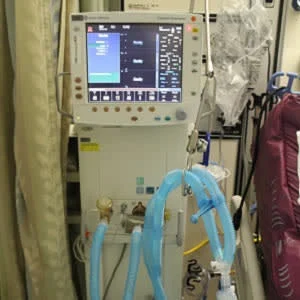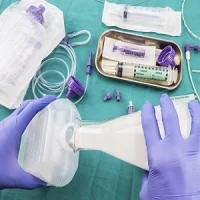Indirect calorimetry (IC) measurement is considered the gold standard for the assessment of resting energy expenditure (REE). It is based on the measurement of oxygen and carbon dioxide consumption (VO2 and VCO2, respectively). Where IC is not possible, REE derived from VCO2 obtained from the ventilator may be the best alternative. However, new research shows the level of agreement of REE obtained from VCO2 readings with REE obtained from IC was generally low. Thus, for defining the appropriate calorie target in critically ill patients, IC remains the best tool, according to the research published in the journal Critical Care.
IC use is limited by cost and technical issues, hence the use of VCO2 alone has recently been suggested as an alternative method to calculate REE in mechanically ventilated patients. This method is based on the Weir equation, where VO2 is not measured but is derived as being equal to VCO2/RQ, where RQ is the respiratory quotient which in turn is derived from VCO2/VO2. This is defined as the REE-VCO2. However, the level of accuracy of REE-VCO2 is uncertain. The RQ value may vary according to substrate utilisation and therefore the REE calculation may differ accordingly.
The present study was conducted to compare the REE-VCO2 with the REE derived from IC. This was a retrospective study conducted at the general intensive care unit of a single university-affiliated tertiary medical centre. Patients included were invasively ventilated and their REE was measured by using IC. The RQs were set at 0.8, 0.85, and 0.89. Data were collected from computerised patient files. REE obtained from the ventilator by using VCO2 (REE-VCO2) alone was compared with REE obtained from IC (REE-IC).
For this study, measurements were obtained for 80 patients, and 497 REE-IC measurements were compared with REE-VCO2 obtained at the same time. The mean REE-IC was 2,059.5 ± 491.7 kcal/d. The mean REE-RQs corresponding to RQs of 0.80, 0.85, and 0.89 were 1936.8 ± 680.0, 2017.8 ± 708.8, and 2,122.1 ± 745.4 kcal/d, respectively. REE-VCO2 derived from an RQ of 0.85 had the lowest mean difference from REE-IC. Whereas accuracy was higher using an RQ of 0.85, agreement (between 85% and 115%) was highest using an RQ of 0.89.
In this study, "we demonstrated the ability of VCO2 to predict REE based on measurements by the calorimeter and specific regression with very high accuracy (agreement). This represents the 'ceiling' of possibility of using VCO2, but it remains unclear whether this applies to VCO2 measurements made by the ventilator," the authors note.
According to the authors, using VCO2 to estimate energy expenditure is challenged by a medical hazard: the quite unpredicted error as compared with the gold standard. If mean (median) values presented may perhaps be acceptable, the larger scatter is not, the authors point out.
The study has several limitations, including its retrospective design such that the study did not take into account sedation, ventilator types, and settings but used a VCO2 measurement over the 6 hours preceding the assessment. Also, the RQ examined used predefined common values and was not obtained according to nutritional intake. Although the sample size was comparable to that of other studies, it was small and single-centred.
Source: Critical Care
Image Credit: Quinn Dombrowski via Flickr
References:
Kagan I et al. (2018) Validation of carbon dioxide production (VCO2) as a tool to calculate resting energy expenditure (REE) in mechanically ventilated critically ill patients: a retrospective observational study. Critical Care 22:186 https://doi.org/10.1186/s13054-018-2108-8
Latest Articles
indirect calorimetry, resting energy expenditure, REE assessment tool
Indirect calorimetry (IC) measurement is considered the gold standard for the assessment of resting energy expenditure (REE). It is based on the measurement of oxygen and carbon dioxide consumption (VO2 and VCO2, respectively). Where IC is not possible, R








